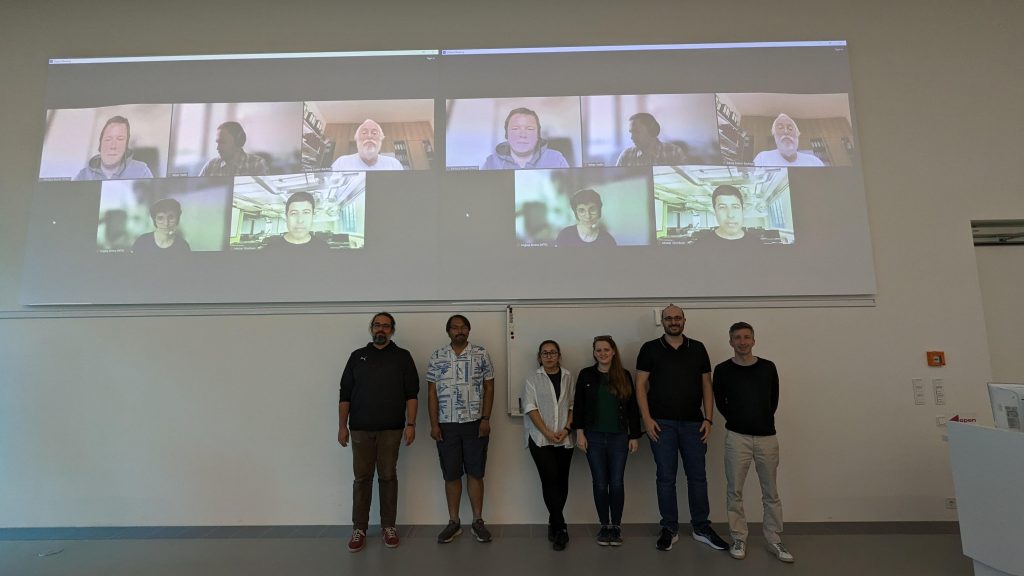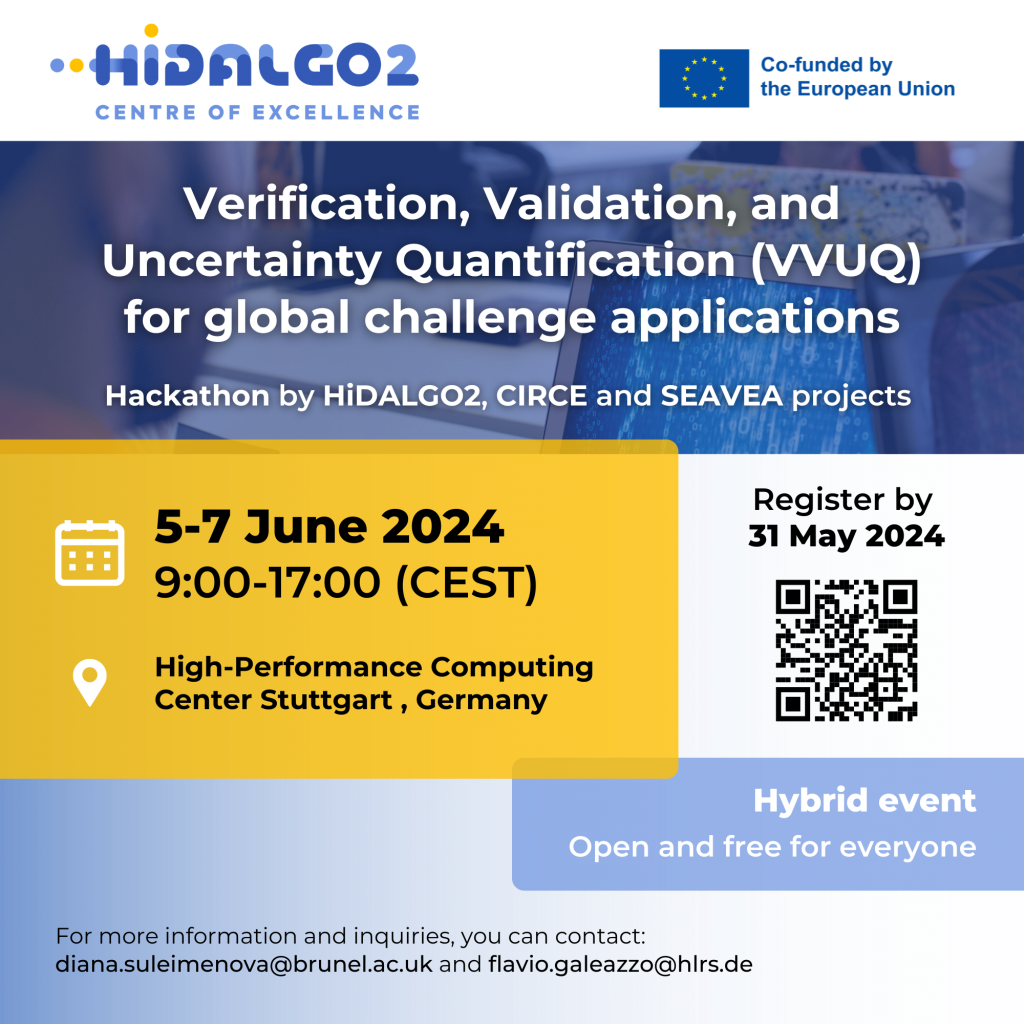
HiDALGO2 project together with CIRCE and SEAVEA projects organised a joint Uncertainty Quantification (UQ) hackathon in June 2024. It focused on enabling Verification, Validation, and Uncertainty Quantification (VVUQ) for global challenge applications (e.g., those used in HiDALGO2 and CIRCE) using the SEAVEA toolkit (SEAVEAtk).
Along with other participants from several countries, HiDALGO2 partners participated in the hackathon with the project’s four out of five use cases: Urban Air Project, Urban Building Model, Wildfires, and Renewable Energy Sources. The content of the hackathon was tailored to the expertise level of each participant, and there was a wide range, from beginners to very advanced users.

The mUQSA web-based Graphical User Interface, which is developed by the HiDALGO2 project coordinator, Poznań Supercomputing and Networking Center (PSNC) and uses the SEAVEA toolkit (SEAVEAtk) in the backend, attracted the attention from the participants. Also, the tools EasyVVUQ (for creating VVUQ procedures), QCG Pilot Job Manager, and RADICAL Cybertools (which enable the efficient execution of large numbers of jobs on computational resources) have been actively used during the hackathon.
The event was hybrid, and we had 8 participants on-site and 17 participants online. The synergy between the on-site instructors and the online audience was very productive.
This news article was written by our partner and organiser of the hackathon, High-Performance Computing Center Stuttgart (HLRS), and Flavio Cesar Cunha Galeazzo, Research Scientist at HRLS.

Stay tuned with us by subscribing to our newsletter and checking all the updates on our social media.
Follow us on social media:
Linkedin | @HiDALGO2
X (Twitter) | @HiDALGO2_EU
Facebook | @Hidalgo2 EU Project
Youtube | @HiDALGO



